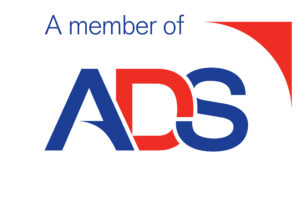From the 1st of July, employees will be able to bring back furloughed workers back to work part-time whilst still receiving a grant under the Coronavirus Job Retention Scheme (CJRS).
This means that the employee will still get an amount from the CJRS for the hours the employee is not working (up to the applicable cap, pro-rated based on the proportion of hours not worked, currently 80% of salary up to a cap of £2,500). Employers can bring employees back to work for as much or little as the business needs as there is no minimum or maximum flexible furlough period. Employees can also enter into a flexible furlough agreement more than once. Employers will be responsible for paying the employees’ wages in full whilst they are in work but will receive the grant under the CJRS for any of the employee’s normal hours not worked.
If employees are unable to return to work, or employers do not have the need for all of their employees to return, they can remain on furlough and continue to claim the grant under the normal rules.
Employers should keep in mind that in the months following July, they will begin to contribute to the costs of the furloughed employees including covering National Insurance and pension contributions from the 1st of August. From September 2020 employers will only be able to reclaim 70% of furloughed employees’ salary from the CJRS (up to a maximum of £2,187.50) and from October 2020 the Government will only contribute towards 60% of furloughed employees pay (capped at £1,875). These percentages and caps will be reduced proportionately by any hours worked by the employees on flexible furlough.
Who can you claim for?
Employers can only furlough and claim for employees who have been furloughed for at least three consecutive weeks between 1 March and 30 June (effectively, this means the employees will need to have been placed on furlough leave by 10 June at the latest). However, there is an exception for those returning from maternity and other parental leave or a military reservist returning from a period of mobilisation. Employers will be able furlough an employee returning from maternity, shared parental, adoption, paternity, parental bereavement leave or a military reservist returning from a period of mobilisation after 10 June, even if they are furloughing them for the first time. This is subject to conditions you can find here.
Where a previously furloughed employee starts a new furlough period before 1 July, this furlough period must also last for a minimum of 3 weeks even if this means it will end after 1 July.
Flexible Furlough Agreement
The guidance says employers will need to agree flexible furlough with their employees and keep a new written agreement that confirms the new furlough arrangement. It also says it is necessary to keep a written record of the agreement for five years. This must be done in accordance with existing employment law. Therefore, when employers are determining which employees to bring back to work part time – and what hours they will work – the criteria should be fair, reasonable and objective and neither directly, nor indirectly, discriminatory. Employees also cannot undertake any work for their employer during furloughed hours and so the agreement should make this clear.
Employers will also need to keep records of how many hours their employees work and the number of hours they are furloughed (i.e. not working). These records should be kept for six years.
What do I need to do?
Claims under the new CJRS can be submitted from 1 July, and the last claims under the existing scheme must be submitted by 31 July.
When submitting claims in respect of an employee on flexible furlough, the employer will be required to include information on actual hours worked, as well as the usual hours that the employee would have been expected to work under their contract in the relevant claim period.
The employer needs to calculate the usual hours for each pay period, or part of a pay period, that falls within the claim period. Employers will therefore need to work out their employee’s usual hours and record the actual hours they work as well as their furloughed hours for each claim period. There are two ways of doing this, depending on whether the employee works fixed or variable hours. Employers should use the variable hours method if the employee is not contracted to do a fixed number of hours or the employee’s pay depends on the number of hours they work. Otherwise they should use the fixed hours method.
Need advice?Contact us to discuss your requirements and how we can help







